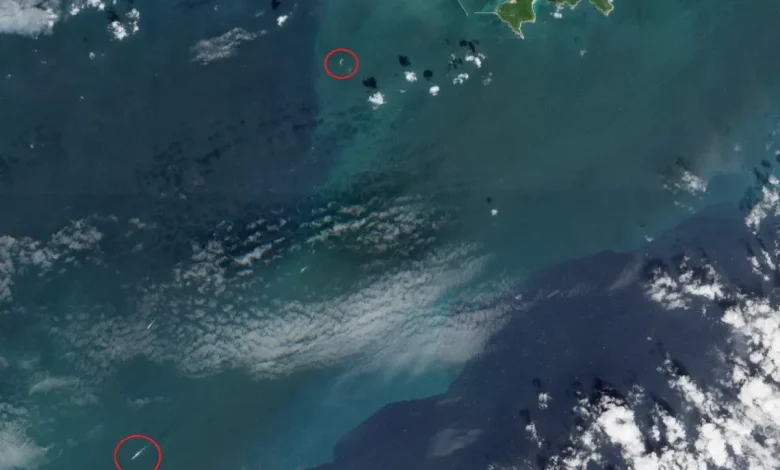Rare Satellite Photo Shows Two Chinese Aircraft Carriers in Disputed Waters

A rare satellite photo has captured two of China’s aircraft carriers operating near each other in waters south of Yulin Naval base.
Why It Matters
China’s aircraft carrier program is a source of national pride and central to the rapid expansion of the People’s Liberation Army (PLA) Navy, now the world’s largest fleet by ship count. The military buildup is part of President Xi Jinping’s efforts to build a force capable of rivaling U.S. dominance in the Pacific.
Located in China’s southernmost province of Hainan, the Yulin Naval Base is a strategic center for the Chinese navy, home to its nuclear submarines and specialized docks for aircraft carriers. Beijing claims nearly the entire South China Sea, bringing it into conflict with several other governments that have competing territorial claims.
Newsweek reached out to the Chinese Defense Ministry by email outside of regular office hours with requests for comment.
What To Know
A European Space Agency satellite captured images of both aircraft carriers, homeported at Yulin Naval Base, operating southeast of the Sanya City complex.
The CNS Shandong, which entered service in 2019, was seen just southwest of Yulin Naval Base within China’s territorial waters.
Meanwhile, the Fujian and several support ships were spotted several miles further southwest, beyond China’s territorial boundary and in waters claimed by both China and Vietnam as their exclusive economic zone.
Open-source intelligence analyst Damien Symon, who flagged the ships’ positions on X, noted that both vessels had returned to port as of Tuesday.
It marked the first time the Fujian—China’s largest and most advanced warship—had left port since being commissioned on November 5.
1 of 2
China’s Defense Ministry said in a Tuesday report that the Fujian’s strike group included the guided missile destroyer CNS Yan’an and the guided missile frigate CNS Tongliao.
During its inaugural “live-force training mission,” multiple types of aircraft launched sorties, making use of the carrier’s electromagnetic catapult for takeoff. Aircraft involved included J-15T heavy fighter jets, the J-15DT electronic warfare variant, the J-35 stealth fighter, and KJ-600 early warning aircraft, according to the ministry.
The Fujian is the first Chinese carrier to be equipped with catapults, a departure from the “ski ramps” used to deploy aircraft from the Shandong and the Liaoning, a refitted Soviet-era vessel purchased from Ukraine.
The strike group was also said to have conducted joint ship and aircraft search-and-rescue drills, as well as formation navigation training.
What People Are Saying
China’s Foreign Ministry said: “It is learned that the maritime training is a normal arrangement in accordance with the work plan, aiming to test the training effectiveness of the Fujian carrier strike group and enhance its capability to safeguard China’s national sovereignty, security and development interests.”
The U.S. Congressional Research Service wrote in an April report: “Most observers believe that China is acquiring carriers primarily for their value in other kinds of operations, and to demonstrate China’s status as a leading regional power and major world power.
“In a combat situation involving opposing U.S. naval and air forces, PLA aircraft carriers would be highly vulnerable to attack by U.S. ships and aircraft, but conducting such attacks could divert U.S. ships and aircraft from performing other missions.”
What Happens Next
China has already begun work on its fourth aircraft carrier, currently known as the Type 004. A recent analysis of satellite imagery by defense news website The War Zone determined the vessel will likely be powered by nuclear propulsion, similar to the U.S. Navy’s 11 supercarriers.





